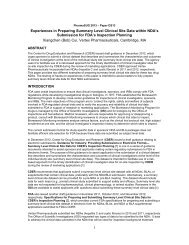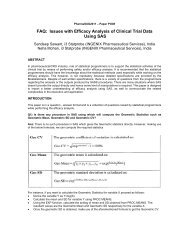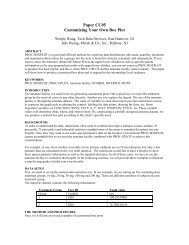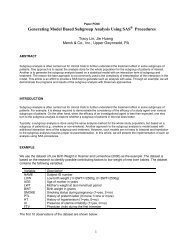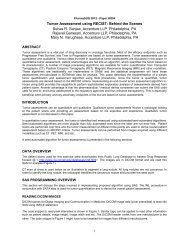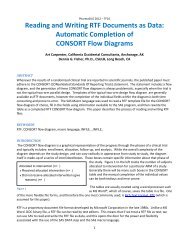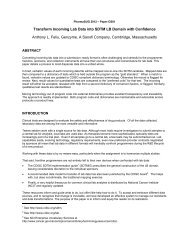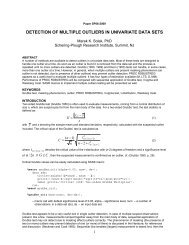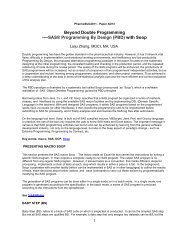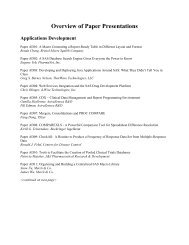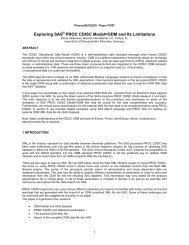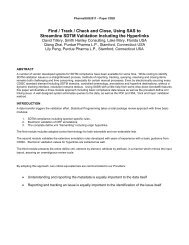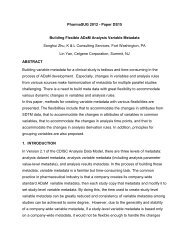SAS® Data Query and Edit Checks with HTML5 - PharmaSUG
SAS® Data Query and Edit Checks with HTML5 - PharmaSUG
SAS® Data Query and Edit Checks with HTML5 - PharmaSUG
Create successful ePaper yourself
Turn your PDF publications into a flip-book with our unique Google optimized e-Paper software.
Validation of software is a st<strong>and</strong>ard process that can be applied in a similar way for different implementations. What<br />
makes this validation project unique is that there are many graphical user interface elements compared to the<br />
traditional batch processing of SAS. Thus, this process requires more testing <strong>with</strong> interactive user interactions via a<br />
web browser. The testing included detailed instructions for the navigation <strong>and</strong> selection of graphical elements that<br />
are more visual compared to a pure scripting test script.<br />
SOFTWARE IMPLEMENTATION<br />
Syview can be implemented for data managers so that they can query SAS datasets <strong>with</strong>out having to write SAS<br />
scripts. Access to the SAS datasets can be centrally managed by an administrator. Therefore, Syview provides a<br />
managed approach to SAS data access, while also extending to data managers a way of easily querying SAS<br />
datasets. Moreover, data managers cannot use Syview to write-over existing SAS datasets. They can only query<br />
SAS datasets <strong>and</strong> are not allowed to edit or update the same data. This allows for Syview to comply <strong>with</strong> 21 CFR<br />
Part 11 regulations from a change control perspective.<br />
In this particular implementation, the software was deployed on a Windows 2003 server running SAS 9.2. The core<br />
technology is SAS but since this is delivered to a thin client, a CGI program was used <strong>and</strong> that was developed in C.<br />
The remaining logic on the server was SAS code used to generate <strong>HTML5</strong>, which will described in the following<br />
steps.<br />
STEP 1 – User Access<br />
For secured data access, the first screen that is presented is a user login screen.<br />
The SAS program on the server is invoked to generate the <strong>HTML5</strong> code for the login screen. This HTML code<br />
contains only a couple of user input fields.<br />
<br />
<br />
User Name<br />
<br />
<br />
<br />
<br />
Password <br />
<br />
Forgot Password?<br />
<br />
<br />
<br />
The HTML also contains calls to a couple of JavaScript functions to perform error checking. This method of checking<br />
is more responsive for the user since the software does not need to connect to the server to validate missing<br />
credentials. The JavaScript is inserted along <strong>with</strong> the HTML so it is delivered to the browser at the same time.<br />
5



